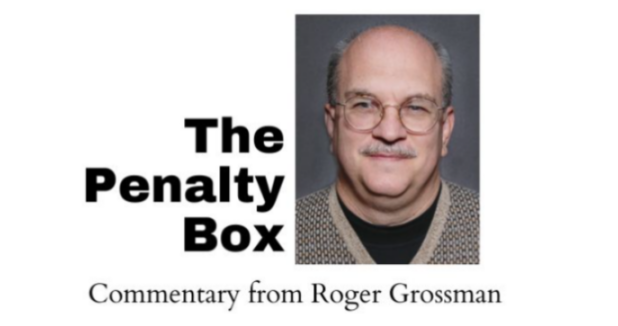By Roger Grossman
News Now Warsaw
The IHSAA has a problem and it’s taken the first steps in trying to correct it.
When the governing body of high school sports first popped the lid on class sports almost 30 years ago, they split basketball, baseball, softball and volleyball into four equally divided groups. The largest 25-percent became 4A, the next largest 25-percent 3A and so on.
They knew then, but might not admit it now, that they had a serious problem in the largest class. If they didn’t see it, then shame on them.
The problem is the enrollment gap between the smallest 4A school and the biggest 4A school.
As the schools stand right now, Carmel has the largest enrollment in the state at 5,327 (using the boys basketball enrollment numbers for the purpose of this discussion). For perspective, when school is in session, Carmel High School would be the 125th largest city in the state — just a little bigger than the entire town of North Manchester.
The smallest school in 4A is South Bend Riley, which has a certified enrollment of 1,030 students.
Again, for perspective, the graduating class of 2023 at Carmel was larger than the top four grades of a school that is in the same class as Carmel.
Here’s another way to look at it: the enrollment at the bottom five schools in 4A adds up to Carmel’s enrollment.
No matter what your point of view, that’s just not right.
There has been an overt movement to add a fifth class to those sports. In that scenario, Logansport would be the smallest school in 4A at 1,252. That’s still a gap of 4,100.
The five-class proposal met with resistance from the IHSAA because it messes with the timeline of the basketball state finals. For those two days, tickets are sold for the “day session” and the “night session.” After the 2A title game, the day session fans are cleared out, the seating area spruced up, and the doors reopen for the night session at 5 p.m. for the 3A game at 6 p.m.
The time difference between the 2A and 3A games is about 3 hours and 30 minutes. You could certainly play another basketball game in there, but there would not be time to clear out the arena.
Selling the games as separate sessions won’t work, and making all seating general admission seems like the best plan but it’s not a good one.
So, the five-class plan is on the shelf, for now.
In the short term, the IHSAA is changing the formula by which schools are classified.
The schools, to this point, have been evenly split into four classes. For the next two-year cycle next summer, the 4A class will only include the largest 20 percent instead of 25; 3A will be the next 25 percent, then 2A will be the next 25 percent, and 1A will be the smallest 30 percent.
There is a truth that no one wants to speak here, but I will—small schools have a lot to do with this problem. These little charter, magnet and private schools popping all over Indiana that have garnered IHSAA approval to compete in the state tournament have skewed the numbers and forced legit 1A schools above the threshold into 2A status.
This new formula will help with that.
What does this mean for our schools?
Warsaw is number 30 in enrollment according to these numbers, and they would remain in 4A. The cutoff line would be about number 80, which would move schools like Plymouth, Columbia City and East Noble to 3A.
NorthWood and Wawasee would be solidly in 3A, and Tippecanoe Valley would still be 3A but would be one of the smaller schools in that class. Manchester and Whitko would be 2A.
Triton and Lakeland Christian would still be in 1A.
The IHSAA has taken some heat on a couple of different fronts on this whole issue.
One side of it is that the basketball and football finals have almost become an Indy Metro Area Championship and public schools from Northern and Southern Indiana get shut out a lot.
There are theories on this, and I choose not to share them at this time because they would be earth-shattering if they were proven to be true … and there is no proof to back them up.
They also keep getting reminded about the enrollment discrepancy within 4A. What they did with changing the formula is a step toward seeing what they can do about that, but it is only a first step. I think, when it’s said and done, the 4A class might be shrunk down as low as 15 or 10 percent. But no matter how you slice it, there will be a huge difference between the biggest schools in the upper two classes.
Adding classes is the only way to completely even it out, and I don’t think the IHSAA nor most of the sports fans they are wooing to their venues come tournament time have much of an appetite for that.





